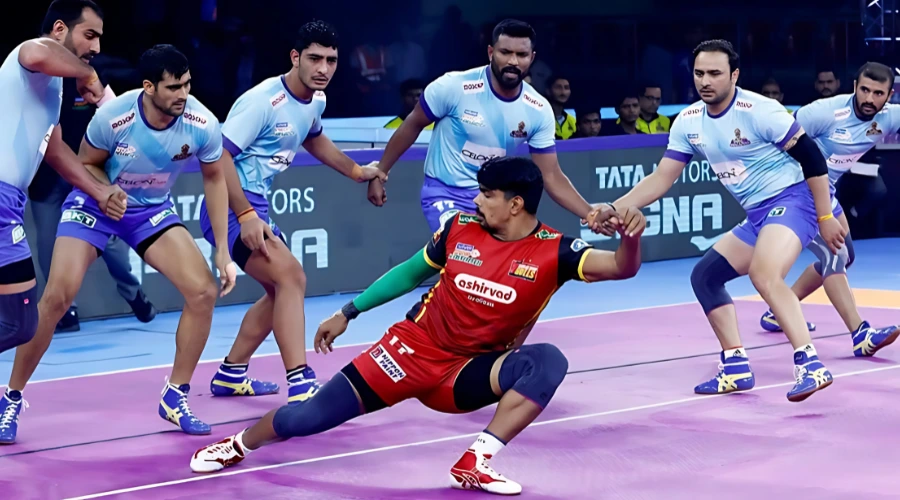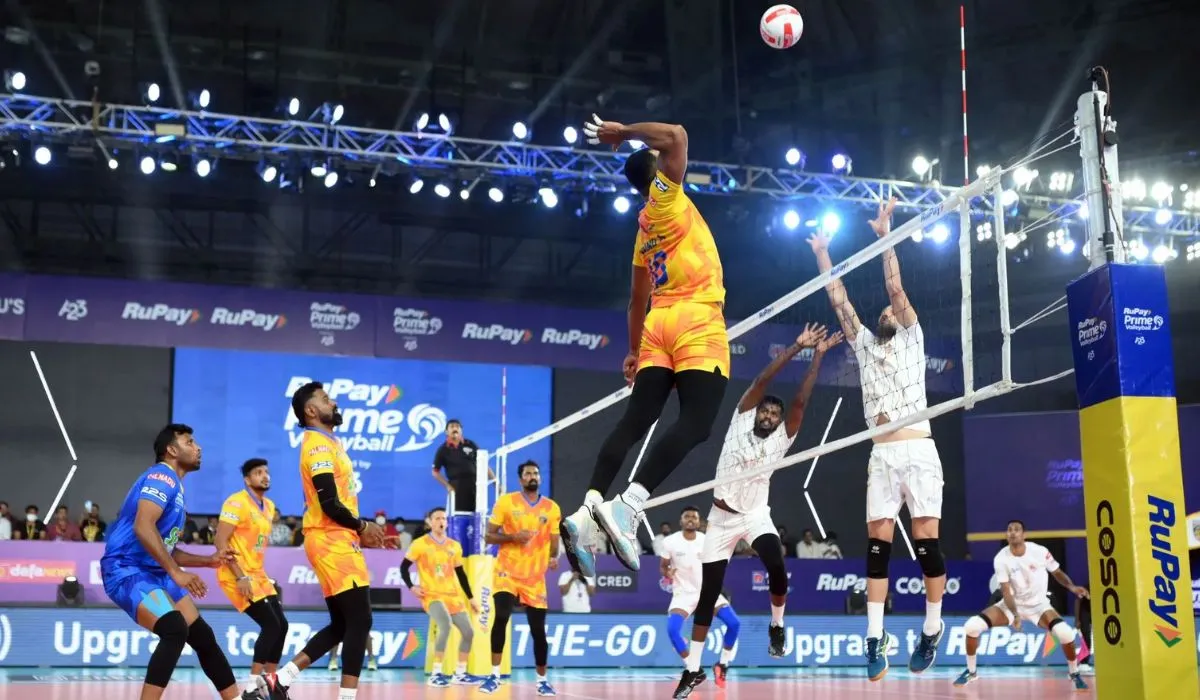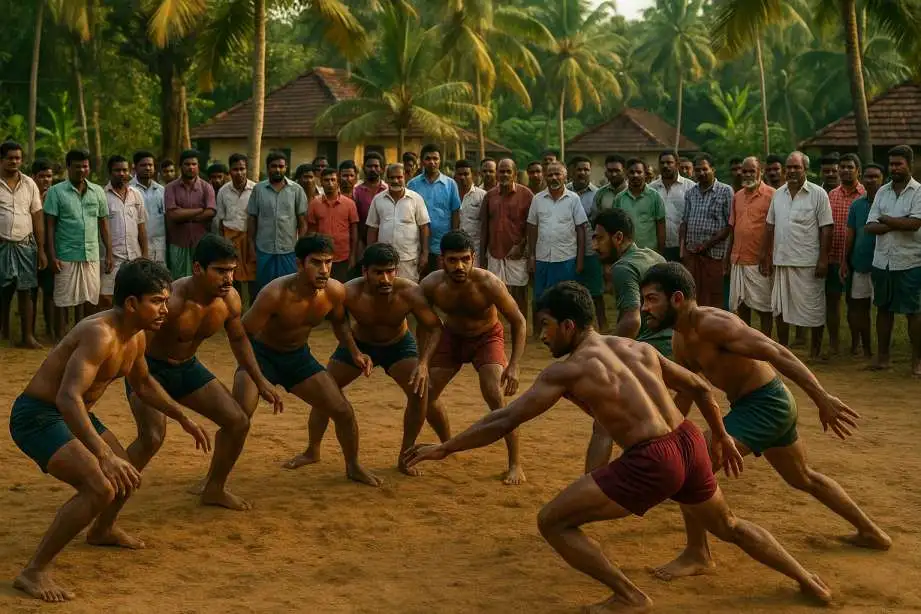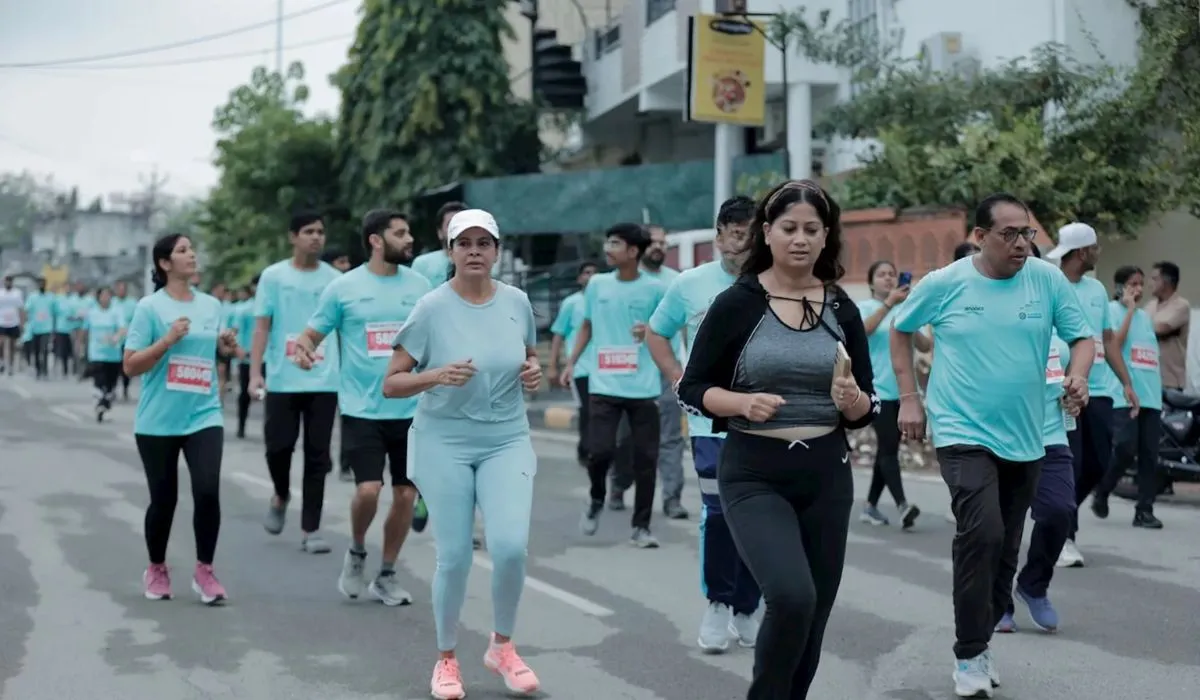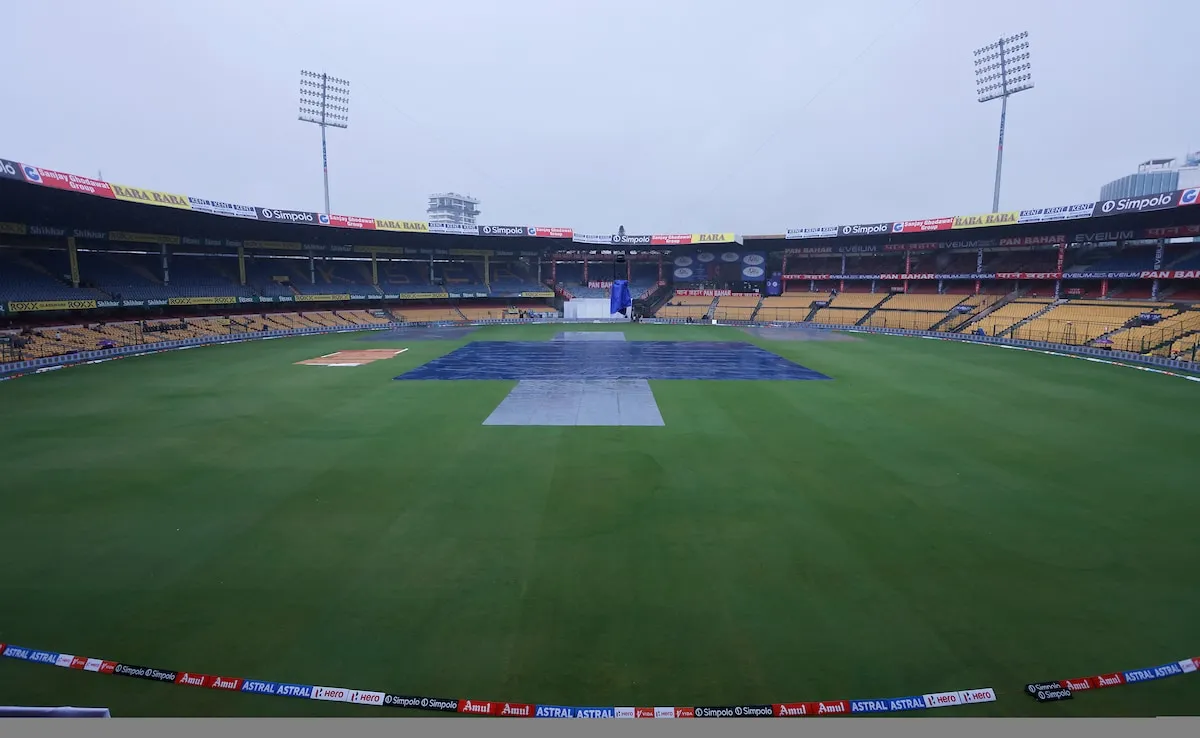Have you ever watched a sport where players hold their breath and chant while trying to tag opponents? That's kabaddi for you! This amazing game has been around for thousands of years and is now played by millions of people worldwide. Let me take you on an exciting journey to discover everything about this thrilling sport. Whether you're a complete beginner or just curious about kabaddi, this guide will help you understand every aspect of the game.
What is Kabaddi and How is it Played: Understanding the Basics
Kabaddi is a contact sport that combines elements of wrestling and tag. Two teams take turns sending one player (called a raider) into the opponent's half of the court. The raider must touch as many defenders as possible and return safely to their side - all while holding their breath!
The magic happens when the raider chants "kabaddi, kabaddi" continuously without taking a breath. If they stop chanting or take a breath, they're out. Meanwhile, the defending team tries to tackle and stop the raider from returning to their side. This ancient sport originated in India and has spread across South Asia. Today, it's the national sport of Bangladesh and Punjab (India). The game is so popular that professional leagues attract millions of viewers on television.
The Rich History Behind This Amazing Sport
Kabaddi has roots that go back over 4,000 years. Ancient warriors used similar games to train for battle. They needed to develop strength, agility, and breath control - exactly what kabaddi teaches. The modern version started taking shape in the early 1900s. Different regions had their own versions with slightly different rules. Some called it "hu-tu-tu" while others knew it as "hadudu" or "baibalaa."
In 1918, the first organized kabaddi competition happened in Maharashtra, India. The sport gained international recognition when it was included in the Asian Games in 1990. Since then, kabaddi has spread to over 65 countries worldwide.
The Pro Kabaddi League, launched in 2014, revolutionized the sport. It brought kabaddi to television screens across India and made players into household names. This league helped standardize the rules and made the game more exciting for viewers.
What is Kabaddi and How is it Played: Essential Equipment and Court Setup
The Playing Court
A kabaddi court is rectangular and measures 13 meters by 10 meters. The court is divided into two equal halves by a center line. Each half belongs to one team.
The court also has several important lines:
- Baulk lines: Located 3.75 meters from each end line
- Bonus lines: Positioned 1 meter from the baulk lines
- End lines: The boundaries at each end of the court
- Side lines: The boundaries on the sides
Equipment Needed
One of the best things about kabaddi is that you don't need expensive equipment. Here's what you need:
- Comfortable clothing: Loose-fitting shorts and t-shirt
- Proper footwear: Non-slip shoes with good grip
- Knee pads: Optional but recommended for safety
- A referee's whistle: For official games
The simplicity of equipment makes kabaddi accessible to everyone. You can play it in schools, parks, or even your backyard with minimal setup.
Team Composition and Player Positions
Each kabaddi team has 12 players total, but only 7 players are on the court at any time. The remaining 5 players are substitutes who can replace active players during the game.
Player Roles
Raiders are the offensive players who enter the opponent's court. They need excellent breath control, speed, and agility. Good raiders can hold their breath for 30-40 seconds while staying active.
Defenders work together to stop raiders. They use various techniques like ankle holds, thigh holds, and chain tackles. Defenders need strength, coordination, and quick reflexes.
All-rounders can both raid and defend effectively. These versatile players are valuable assets to any team. They often become team captains because they understand both aspects of the game. Teams usually have 2-3 dedicated raiders, 3-4 defenders, and 1-2 all-rounders on the court. The captain decides the strategy and makes tactical changes during the game.
Kabaddi Rules: The Complete Guide to Understanding the Game
Basic Game Structure
A kabaddi match consists of two halves, each lasting 20 minutes. There's a 5-minute break between halves. During this break, teams switch sides of the court. The game starts with a coin toss. The winning team chooses either the court side or whether to raid first. Teams alternate between raiding and defending every time a raid ends.
The Raiding Process
When it's your team's turn to raid, one player crosses the center line into the opponent's court. This player must:
- Chant "kabaddi, kabaddi" continuously
- Try to touch one or more defenders
- Return to their side of the court
- Complete all this in one breath
If the raider successfully touches a defender and returns safely, that defender is out. The raider's team scores one point for each defender touched.
Defending Strategies
The defending team has 30 seconds to stop the raider. They can use various techniques:
- Ankle hold: Grabbing the raider's ankle
- Thigh hold: Holding the raider's thigh
- Chain tackle: Multiple defenders linking together
- Block: Creating a wall to prevent the raider's return
If defenders successfully stop the raider from returning, they score one point and the raider is out.
10 Rules of Kabaddi Every Player Must Know
- Breath Control Rule: Raiders must chant continuously without breathing
- Court Boundaries: Players going out of bounds are eliminated
- Touch Rule: Light contact counts as a valid touch
- Time Limit: Each raid has a 30-second time limit
- Substitution Rule: Only 5 substitutions allowed per team per half
- Revival Rule: Out players return when opponents are eliminated
- Bonus Point Rule: Available when 6 or more defenders are on court
- Technical Point Rule: Awarded for rule violations
- Empty Raid Rule: No points scored if raider returns untouched
- Super Tackle Rule: Defenders get extra points for tackling with 3 or fewer players
Advanced Scoring System and Point Calculation
Regular Points
The basic scoring in kabaddi is straightforward. Teams get one point for each opponent eliminated. However, there are several ways to score bonus points.
Bonus Points
When the defending team has 6 or more players on the court, the raider can score a bonus point. They must cross the bonus line (without being touched) and return safely. This adds an extra point without eliminating any defender.
Super Tackle Points
If the defending team has 3 or fewer players and successfully tackles the raider, they score 2 points instead of 1. This rule keeps the game exciting even when teams have fewer players.
Technical Points
Teams can score technical points when opponents commit rule violations like:
- Delaying the game unnecessarily
- Arguing with referees
- Using illegal holds or moves
- Time violations
All-Out Points
When a team eliminates all 7 opponents, they score 2 extra points called "all-out" points. This bonus encourages aggressive play and can quickly change the game's momentum.
What is Kabaddi and How is it Played in Points: Step-by-Step Gameplay
Pre-Game Setup
- Teams line up on their respective sides
- Captains participate in the coin toss
- Players take their positions
- Referee checks equipment and court
Starting the Raid
- The raiding team sends one player across the center line
- The raider begins chanting "kabaddi, kabaddi"
- Defenders prepare to tackle
- The 30-second timer starts
During the Raid
- Raider attempts to touch defenders
- Defenders try to tackle and hold the raider
- Raider looks for escape routes
- Other players prepare for the next raid
Ending the Raid
- Raider either escapes successfully or gets tackled
- Points are awarded based on the outcome
- Out players leave the court
- Teams prepare for the next raid
Game Flow
- Teams alternate between raiding and defending
- Substitutions happen during breaks
- Coaches give tactical instructions
- The game continues until time expires
Different Variations and Formats of Kabaddi
Standard Style Kabaddi
This is the most common format played in professional leagues. It follows the international rules with specific court dimensions and timing. Standard style kabaddi is what you see on television and in major tournaments.
Circle Style Kabaddi
Popular in rural areas, this version is played in a circle instead of a rectangular court. The rules are similar, but the circular boundary creates different strategies. This format is often seen in traditional festivals and village competitions.
Beach Kabaddi
Played on sand courts, beach kabaddi adds extra challenges. The soft surface makes movement difficult and changes the game dynamics. This variation is growing popular in coastal areas and international beach sports festivals.
Women's Kabaddi
Women's kabaddi follows the same rules but with shorter game duration (15 minutes per half). The sport has gained tremendous popularity among female athletes, with dedicated leagues and international competitions.
Junior Kabaddi
Modified rules for younger players include shorter court dimensions and game duration. This helps children learn the sport safely while developing their skills gradually.
Training and Skills Development for Beginners
Physical Fitness Requirements
Kabaddi demands excellent cardiovascular fitness. Players need to build stamina through regular running, cycling, or swimming. A typical training session includes 30 minutes of cardio exercises. Strength training focuses on leg muscles, core, and upper body. Squats, lunges, and planks are essential exercises. Players also need flexibility, so stretching and yoga are important parts of training.
Breath Control Techniques
The most unique skill in kabaddi is breath control. Beginners should practice holding their breath while staying active. Start with 15-20 seconds and gradually increase the duration. Breathing exercises like pranayama help improve lung capacity. Practice chanting "kabaddi" clearly while moving around. This takes time to master, so be patient with yourself.
Basic Skills Practice
Raiding skills include quick footwork, direction changes, and escape techniques. Practice touching targets while moving at full speed. Learn different touching techniques like hand touch, toe touch, and shoulder touch.
Defending skills focus on holds and tackles. Practice ankle holds, thigh holds, and chain formations with teammates. Timing is crucial in defending, so work on reaction speed.
Safety Measures and Injury Prevention
Common Injuries in Kabaddi
Kabaddi is a contact sport, so injuries can happen. The most common injuries include ankle sprains, knee injuries, and muscle strains. Shoulder injuries also occur during tackles.
Prevention Strategies
Proper warm-up before playing is essential. Spend at least 10 minutes doing light exercises and stretches. This prepares your muscles and joints for the intense activity ahead. Wearing appropriate gear helps prevent injuries. Good quality shoes provide grip and ankle support. Knee pads protect against floor burns and impact injuries.
First Aid Basics
Every kabaddi team should have basic first aid knowledge. Know how to treat minor cuts, sprains, and muscle cramps. Keep ice packs and bandages available during games and practice. When serious injuries occur, stop playing immediately and seek medical help. Never try to "play through" significant pain or injury.
Professional Kabaddi and Career Opportunities
Pro Kabaddi League
The Pro Kabaddi League has transformed kabaddi into a professional sport. Players earn substantial salaries, and matches are broadcast worldwide. The league runs for several months each year and attracts top talent.
International Competitions
The Kabaddi World Cup brings together teams from different countries. Asian Games and Commonwealth Games also feature kabaddi competitions. These tournaments showcase the sport's global growth.
Career Paths in Kabaddi
Professional playing careers can be lucrative for skilled athletes. Top raiders and defenders earn millions through league contracts and endorsements. Coaching and refereeing also offer career opportunities. Sports management, broadcasting, and kabaddi journalism are growing fields. The sport's popularity creates jobs in marketing, event management, and media production.
Getting Started: Your First Steps into Kabaddi
Finding Local Clubs and Teams
Look for kabaddi clubs in your area through sports associations or community centers. Many schools and colleges have kabaddi teams you can join. Social media groups often organize casual games for beginners.
Basic Training Programs
Start with beginner-friendly programs that focus on fundamental skills. Most clubs offer coaching for new players. Don't worry about being perfect initially - everyone starts somewhere.
Equipment Shopping
Begin with basic comfortable clothing and good sports shoes. As you progress, you can invest in specialized gear like knee pads and proper kabaddi shorts.
Setting Realistic Goals
Set achievable goals like mastering breath control or learning basic raiding techniques. Celebrate small improvements and stay consistent with practice. Remember that becoming skilled takes time and dedication.
Conclusion: Your Kabaddi Journey Starts Now
Kabaddi is more than just a sport - it's a complete physical and mental challenge that builds character, fitness, and teamwork skills. From its ancient origins to modern professional leagues, kabaddi continues to captivate players and fans worldwide. The beauty of kabaddi lies in its simplicity and accessibility. You don't need expensive equipment or fancy facilities to start playing. All you need is enthusiasm, willingness to learn, and respect for this wonderful game. Whether you want to play competitively or just for fun, kabaddi offers something for everyone. The sport teaches valuable life lessons about perseverance, strategy, and working as a team. It's also an excellent way to stay fit and make new friends.
Remember that every expert was once a beginner. Start with the basics, practice regularly, and don't be afraid to make mistakes. Join a local club, find a mentor, and immerse yourself in the kabaddi community. The world of kabaddi is waiting for you. Take that first step onto the court, take a deep breath, and begin chanting "kabaddi, kabaddi." Your exciting journey in this amazing sport starts now! So what are you waiting for? Find a kabaddi court near you and experience the thrill of this incredible game. Trust me, once you start playing kabaddi, you'll understand why millions of people around the world are passionate about this sport.



